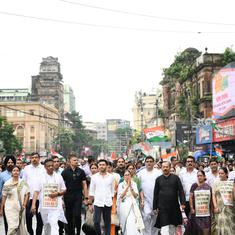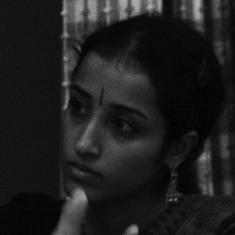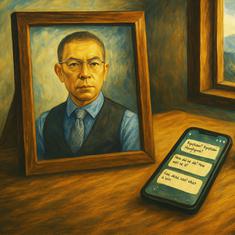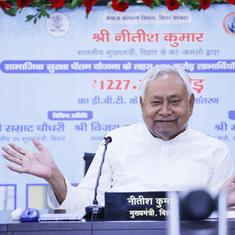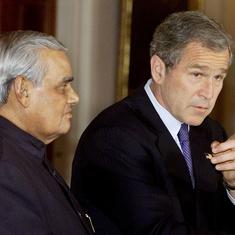MF Husain's very first film tried to combine painting and cinema to create poetry
Maqbool Fida Husain, commonly known as MF Husain was born to a Sulaymani Bohra family in Pandharpur on September 17, 1915. Also known as ‘Picasso of India’, Hussain painted many Hindu deities and legends. Besides painting, Husain also loved cinema and his first film, Through The Eyes of a Painter, produced by the Films Division of India in 1967 is one of his masterpieces.
The film starts with Husain in plain white kurta-pajama looking into the camera and explaining how moving visuals with only music and no spoken words can create a dialogue between the viewers and the painter. For the setting, Husain chose Rajasthan, which he often visited to get inspiration for his paintings. Through The Eyes goes on to present his impressions of the state through a fragmented narrative.
We see a broken lantern, a royal sandal under an umbrella, a local woman walking on a barren land, one goat strolling in front of a tiger model, men with giant moustaches and beards and children playing in schools. In between the shots, a painter picks an important character from the sequences and decides what turns into a painting.
Though the film doesn’t have spoken dialogues, it includes abrupt yet subtle music composed by Elchuri Vijaya Raghava Rao of Andhra Pradesh. Raghava Rao was a renowned flute-maestro who worked in many films and dramas. "He rightly understood my feelings and composed the music; otherwise I would have been doomed,"said Husain.
MF Husain received National Film Award for Best Experimental Film for Through the Eyes of a Painter in 1967. His film even got international recognition when in the same year, he bagged Golden Bear short film award at the Berlin Film Festival.

